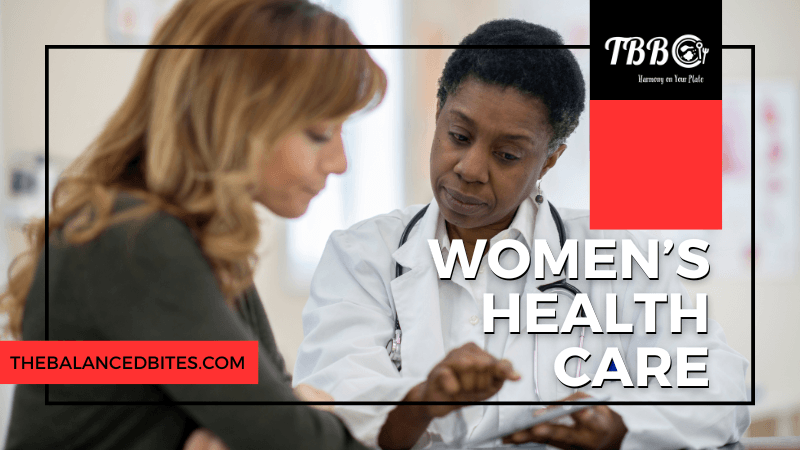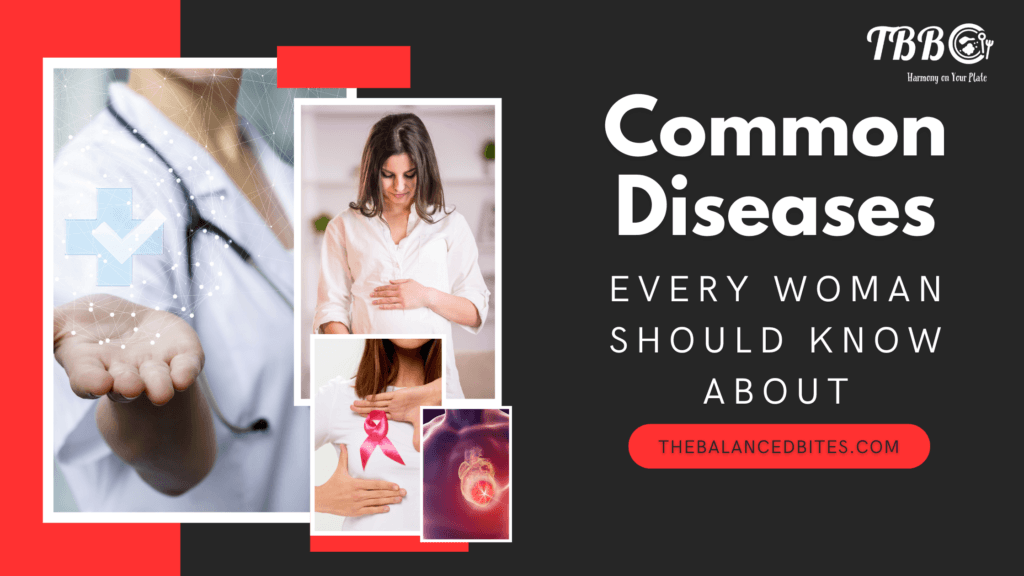Women’s healthcare is a multifaceted debate that has been researched over the years due to its importance in women’s lifestyles. It encompasses various diseases and issues affecting women’s physical, emotional, and reproductive well-being. Understanding these issues and remaining vigilant are the keys to maintaining a healthy and active lifestyle.
This blog delves into the 6 most common issues and diseases affecting women worldwide yearly. These diseases, if not addressed timely, can have life-threatening consequences, impacting the lives of women and their families.

6 Common Diseases Every Woman Should Know About
Below is a list of some of the most common issues and diseases that every woman should be aware of to ensure an adequate women’s healthcare regime and implement general women’s health support initiatives.
Heart Disease
Statistics by the Centers for Disease Control and Prevention show that heart attack is the leading cause of death for US women. Heart disease was responsible for the deaths of 310,661 women, about 1 in every 5 female deaths.
Some symptoms of heart disease in women are not clear from the onset. These are:
- Angina or discomfort in the chest
- Neck pain, jaw pain, or abdominal pain
- Nausea or vomiting
Risk Factors for heart disease are:
- High blood pressure
- Smoking
- Diabetes
- Inactive lifestyle
- Excessive weight
- Excessive alcohol consumption
- Stress and depression
Steps that can be taken to reduce the risk of heart disease for optimal women’s healthcare are:
- Quit smoking
- Get your cholesterol levels checked
- Adequate physical activity every week
- Opt for healthy food choices
- Find healthy ways to cope with stress
Breast Cancer
Breast cancer Awareness is among the leading causes of death in women worldwide, with over 670,000 deaths globally in 2022, according to studies by the World Health Organization. In 2022, breast cancer was the most common cancer in 157 out of 185 countries. Breast cancer can affect any woman of any age after puberty but with increasing rates later in life. Although early detection is the key to improved survival rates, it still poses significant risks for women.
Some symptoms of breast cancer that every woman should be aware of are:
- Lump in the breast or around the underarm
- Changes in breast size and shape
- Changes in the appearance of skin
- Pain, swelling, or unexplained weight loss
Risk factors for breast cancer are:
- Over 55 years of age
- Family history
- Hormonal factors
- Being overweight or having a sedentary lifestyle
The risk for breast cancer can be reduced by:
- Maintaining a healthy weight
- Staying physically active
- Quit smoking
- Go for regular screening
- Minimize exposure to radiation
- Limit alcohol consumption
Cervical Cancer
Statistics by the WHO reveal that cervical cancer is the fourth most common cancer in women globally, with about 660,000 new cases and around 350,000 deaths in 2022. Cervical cancer is most prevalent in middle and lower-income countries, owing to a lack of access to national HPV vaccination, cervical screening, and general women’s health support measures.
Although effective screening methods and vaccines are available, many women still lack access to basic resources, making it a critical women’s healthcare issue.
Some common symptoms of cervical cancer every woman should be aware of are:
- Pelvic pain
- Watery or pink vaginal discharge
- Abnormal vaginal bleeding
- Increased menstrual pain
- Lower back pain
- Swelling in the leg or constant pain
Risk factors for cervical cancer are:
- Human Papillomavirus (HPV) infection: infection with certain types of HPV such as HPV types 16 and 18
- Smoking
- Organ transplantation and some conditions that weaken the immune system
- Long-term use of oral contraceptives
- Lack of regular cervical screening
- Family history
The risk for cervical cancer can be reduced by:
- HPV vaccination
- Regular cervical screening
- Avoid smoking
- Managing a healthy diet
- Discussion about any reproductive issues with your healthcare provider
Osteoporosis
According to research, osteoporosis is the most common bone disease, affecting one in three women over the age of 50 worldwide. The rapid ageing of population worldwide and lifestyle changes, the incidence of osteoporosis has increased significantly, making it a critical women’s health issue.
Symptoms of osteoporosis in women to look out for are:
- Spontaneous fractures occurring from minor falls
- Persistent back pain
- Development of hunched posture due to vertebral fractures
- Reduced strength in hands
- Increased unsteadiness and loss of balance
Risk factors of osteoporosis are:
- Age: the risk of osteoporosis increases for individuals over the age of 50
- Gender: women are at higher risk, owing to a drop in estrogen level
- Hormonal changes
- A diet low in calcium and vitamin D
- A sedentary lifestyle
- Smoking
The risk for osteoporosis may be reduced by:
- Quitting smoking
- Adequate calcium and Vitamin D intake
- Incorporating strength training exercises
- Maintaining a healthy weight
- Regular bone density tests
- Healthcare checkups
Endometriosis
Termed as a chronic disease associated with severe pain during sexual intercourse and periods, endometriosis affects about 10% of women of reproductive age globally. Although endometriosis does not cause death directly, it can lower the quality of life significantly, leading to other women health complications.
Symptoms of endometriosis are:
- Chronic pelvic pain
- Irregularities in periods
- Pain during intercourse
- Painful bowel movements or urination
- Infertility
- Gastrointestinal issues
- Lower back pain
- Nausea and fatigue
Risk factors that put some women at a higher risk of getting endometriosis are:
- Family history
- Short or prolonged menstrual cycles
- Menstruation at an early age
- Any abnormalities in the reproductive tract
- Disorders of the immunity system
Factors that can reduce the risk of getting diagnosed with endometriosis are:
- Healthy weight
- Regular exercise
- Hormonal birth control
- Regular gynecological checkups
Polycystic Ovary Syndrome (PCOS)
A leading cause of infertility, PCOS affects an estimated 8-13% of reproductive-aged women around the world, according to data by WHO. About 70% of affected women worldwide remain undiagnosed worldwide, raising concerns about this women’s healthcare issue and its seriousness.
Symptoms of PCOS to look out for are:
- Irregular menstrual cycles
- Acne
- Hair growth on the face, back, or chest
- Excessive weight gain
- Thinning hair
- Fatigue and mood changes
The risk factors of PCOS are:
- Family history
- Insulin resistance
- Obesity
- Sedentary lifestyle
- Unhealthy diet
- High blood pressure, high cholesterol, and diabetes
Factors that can reduce the risk of PCOS are:
- Maintain a healthy weight
- Regular physical activity
- Managing insulin levels
- Stress management
- Avoid smoking

Conclusion
Women’s healthcare is a topic that is often researched but there are some barriers to implementation of effective measures to deal with women health issues, such as a lack of awareness and effective healthcare treatments. It is critical to carefully monitor women’s healthcare issues, as well as deal with them in a proactive measure to ensure women globally lead a healthy and active lifestyle.
